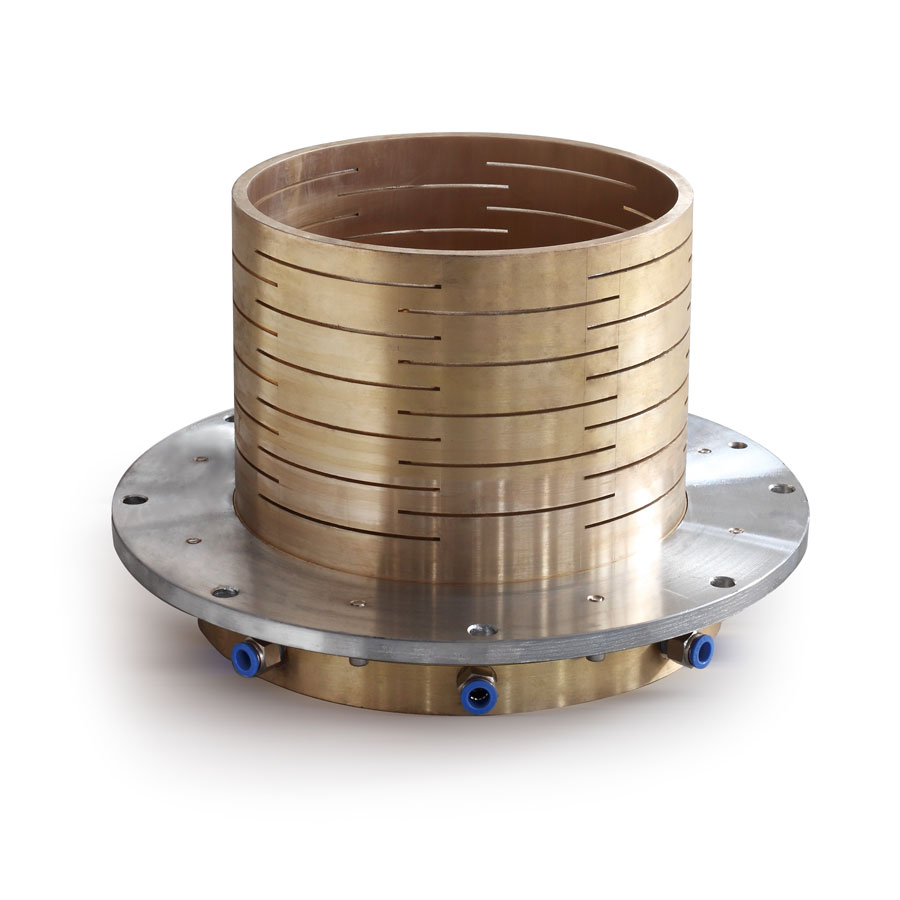Here's an overview of the calibration sleeve and its role in the extrusion process
2023-12-14
A calibration sleeve, in the context of plastic extrusion, is a component used in the production of plastic pipes. It is part of the calibration process, which involves shaping and sizing the extruded plastic material to meet specific dimensional requirements. The calibration sleeve is typically employed in conjunction with a vacuum calibration system and water cooling to achieve precise dimensions and enhance the quality of the final product. Here's an overview of the calibration sleeve and its role in the extrusion process:
1. Purpose:
- The primary purpose of the calibration sleeve is to shape and size the plastic extrudate as it passes through, ensuring that it meets the desired specifications in terms of diameter, wall thickness, and overall geometry.
2. Key Components:
- Sleeve Design: The calibration sleeve is designed with the internal shape and dimensions corresponding to the desired specifications of the plastic pipe being extruded. It may have multiple sections to allow for different stages of calibration.
- Vacuum Ports: The calibration sleeve is typically connected to a vacuum system, which creates a vacuum around the extruded plastic as it passes through. This vacuum helps in achieving more precise shaping and cooling.
- Water Ports: Water circulation ports are often integrated into the calibration sleeve to allow for water cooling. The temperature of the water can be adjusted to control the cooling rate of the plastic product.
3. Operation:
- The calibration sleeve is positioned immediately downstream of the die head on the extrusion line.
- As the plastic material exits the die head, it enters the calibration sleeve, which shapes and sizes it according to the internal dimensions of the sleeve.
- The vacuum system around the sleeve removes air from the space between the plastic and the sleeve, enhancing contact and facilitating better shaping.
- Simultaneously, water is circulated around the sleeve to cool the plastic material rapidly. The controlled cooling helps in setting the dimensions and minimizing internal stresses in the extruded product.
- The calibration sleeve is often part of a larger vacuum calibration tank, which may include multiple sleeves and chambers for gradual shaping and cooling.
4. Advantages:
- Dimensional Accuracy: The calibration sleeve is crucial for achieving precise dimensions in the plastic pipes, ensuring that they meet tight tolerances and adhere to industry standards.
- Reduced Internal Stresses: The controlled cooling provided by the calibration sleeve helps minimize internal stresses in the extruded plastic, contributing to improved product quality.
- Consistent Product Quality: The use of calibration sleeves, along with vacuum calibration and water cooling, leads to a more consistent and high-quality extruded product.
5. Applications:
- Calibration sleeves are commonly used in the production of various plastic pipes, including PVC (Polyvinyl Chloride), CPVC (Chlorinated Polyvinyl Chloride), and other thermoplastic materials.
In summary, the calibration sleeve is a critical component in the plastic extrusion process, contributing to the shaping, sizing, and cooling of plastic pipes. It is part of a comprehensive calibration system designed to ensure the production of plastic products with accurate dimensions and high-quality characteristics.



